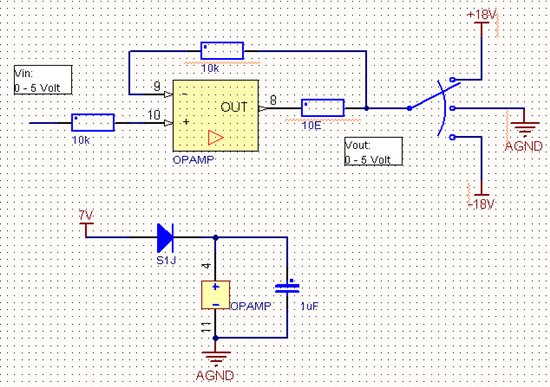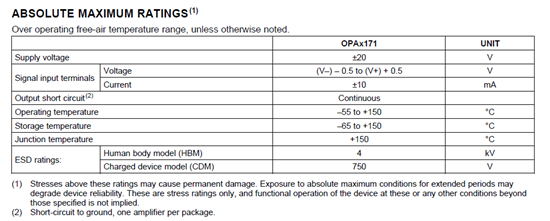Hi,
I'm searching for an opamp which can drive an analog output on a pcb for a car module.
maybe the OPA171 can do the job.
I need 0-5V, 10mA. I Will give the opamp a 7Volt sapperated supply.
But the problem is SHORTS to +12V and to GND. To GND seems no problem. but to 12V it is.
I can not find/read any datsheet information about this.
I'm thinking about a 7Volt supply with a series diode in it, so the extrernal 12V on the output may
lift the supply up to 12 Volt. (even 18V is needed). What will the opamp do? try to short the 12V to gnd
with it's output stage? Does it have thermal protection?
Marien





